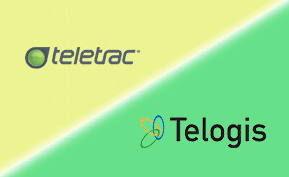GPS Fleet Tracking
Why GPS Fleet Tracking Isn't the Privacy Violator You Feared
GPS fleet tracking looks — at first impression — a lot like ‘Big Brother.’ This software for fleet management can innocently view map routes and follow movements with real-time tracking. Dispatchers can verify your location through live maps and alerts, able to access historical route information from a desktop or mobile device. With fleet asset tracking, dispatchers increase supervision by knowing the vehicles inside and out – its next oil change, its miles, and its overall lifespan. They see when drivers meet at bars or spend a minute longer at a coffee shop. They know everything from driving speed to the manner the vehicle sways or jerks.
With accurate, real-time information, dispatchers have access to when drivers depart, when they arrive, and everything in between.
For fleet management software companies, the largest concern is privacy. With GPS fleet tracking’s capabilities designed to know in real time a vehicle’s exact movements and times, logged into an ever-present database history, concerns are inevitable. But in reality, GPS Fleet Tracking performs these checks as a necessary step to drastically improve the company. Fleet Tracking is not about trust; it’s about automating the collection of monotonous details so that drivers no longer have to.
Rather than monitoring fleets’ every move, GPS fleet tracking reduces operating costs and increases the longevity of assets; it eliminates guess-work and understands the true progress of the fleet. This tracking system improves driver safety, provides optimal routing, and supports maintenance decisions. In truth, eying your coffee breaks is not on the dispatcher’s to-do list at all.
The Great Fleet Tracking Tool: 2-Way Communication
GPS fleet tracking brings a great benefit to both the driver and the dispatcher: 2-way communication. Fleet management software negates one-way orders and gives drivers a voice they’ve never previously had with their dispatchers.
Before, the dispatching team was a faceless ghost disconnected from the driver’s actions, leaving him to manage routes, customer forms, and log notes on his own accord with little input. The fleet would be out at sea, facing the ocean from all sides of a small platform and unable to turn to consult a manager on unexpected encounters. But with real-time tracking, drivers can instantly bring concerns to light.
They can work with their dispatcher rather than feel hopeless next to an inhuman, mechanical guilt-tripping tracking system. If the driver wants to re-route because he heard about a collision a few miles ahead, that driver is able to send an update to his dispatcher who can then re-route quickly, all-out avoiding an agonizing delay. Drivers can find that instead of feeling stuck to rigid plans, they can flexibly improve upon their experience through these tracking solutions.
Analytics is not just for the guys back home. Drivers have access to tools that will inform them and allow them to improve their driving, setting personal benchmarks for themselves and developing a measurable path to improvement. Once field employees gain experience with GPS fleet tracking, they experience benefits as well, depending on seeking routing information, roadside assistance, and verifications of work performed on time.
Alerts such as speed and idling are nice to have for a driver as well as the dispatcher, tracking real-time progress and having a mutual understanding for the needs of the fleet. A friendly reminder to save gas and maintain the vehicle is helpful and objective criticism rather than a personal obstruction of space.
When There’s Too Much Communication
While 2-way communication is a fantastic tool to have, giving drivers a voice and allowing collaboration on the road, there are some instances when not to communicate. This is not at the fault of the GPS Fleet Tracking software itself, but rather of the dispatcher behind the tracking system. Knowing when not to send an alert will do a service to the driver. No longer will dispatchers need to ask “When are you going to get there?” or “How fast are you going?” Tracking reports are now at the dispatcher’s disposal, so there’s no need to exert unnecessary checks and promote a lingering presence.
GPS Fleet Tracking offers the added benefit of automatic alerts. Have the pressing need to ask the driver when he will depart? Don’t ask. Set up an automatic alert that will ping you exactly when the vehicle departs, providing accurate information with minimal disruption.
Given that driver no longer needs to take detailed, everlasting time-logs or report progression on their vehicle, silence and privacy is still a part of the driver’s lifestyle. Counter-intuitively, drivers get more freedom with fleet tracking software.
More Than Dots on a Map
GPS fleet tracking provides more than the ability to watch dots on a map. It saves time, promoting efficiency and accuracy on the road. With the two-way communication feature, drivers are given a voice, able to take charge of their driving and flexibly handle road malfunctions without delay. The driver has access to analytic tools as well, able to set goals for himself or communally create goals with whole fleets.
Fleet Tracking is not an oppressive tool, but a liberating one, giving fleets the ability to take charge, embrace their work, and witness positive results to an ever-growing profitable company.
Want more information on GPS fleet tracking software? Find blog posts and best practices on fleet tracking software on our field service management research page. Or, view side-by-side comparisons of the top GPS fleet tracking software in our free Top 10 GPS Fleet Tracking Software report.






